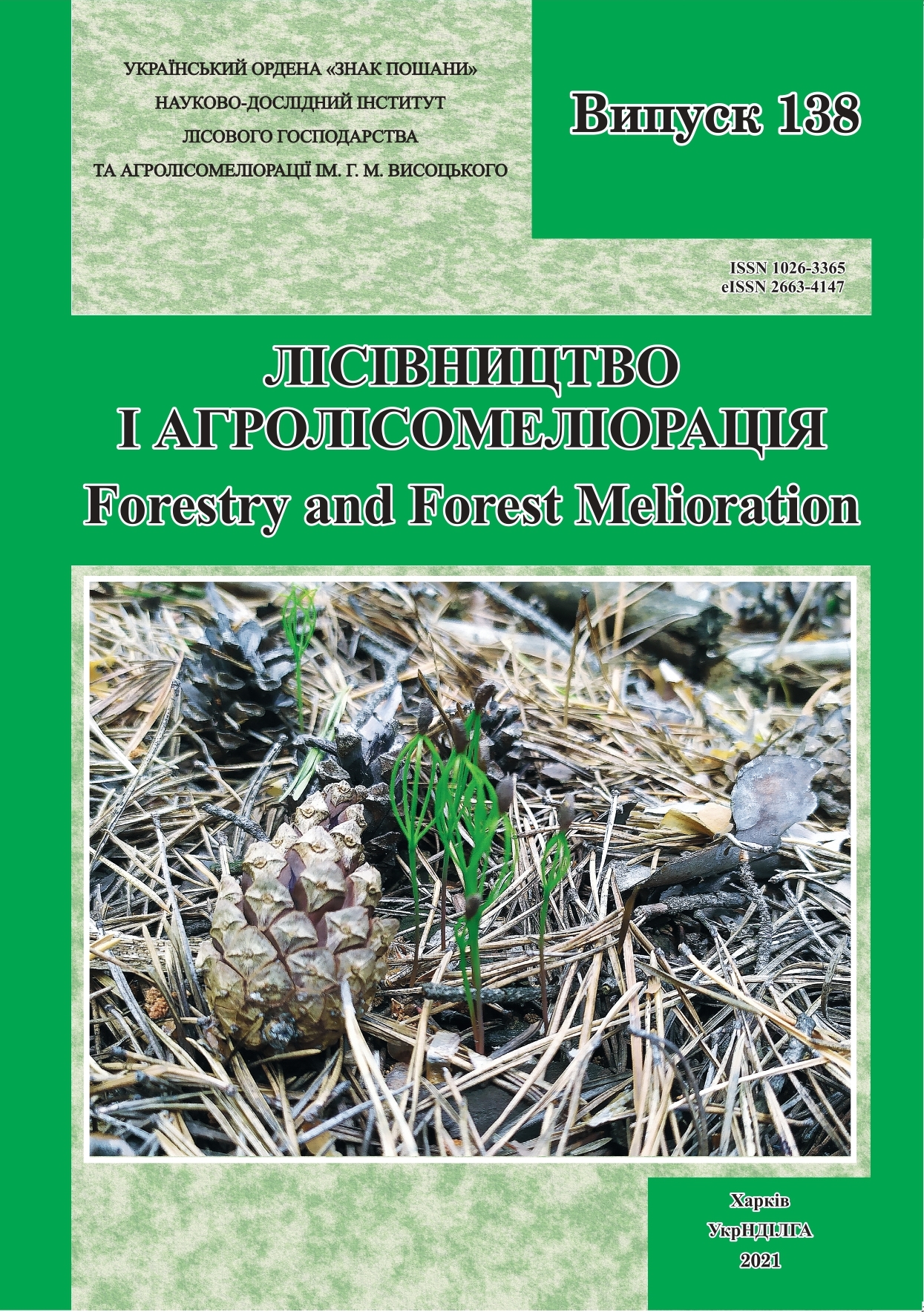Abstract
Introduction
Over the past decades considerable attention has been paid to the use of various techniques and technologies for growing high-quality planting material, including containerized stock. Various biologically active substances are actively used in Ukraine and abroad, including plant hormones which are regulators (promoting factors) of plant growth and development. Their use in agriculture and forestry gives results that cannot be achieved by other methods.
The aim of the study was to assess the impact of plant growth regulators on the biometrics of one-year-old containerized English oak seedlings (Quercus robur L.).
Materials and Methods
The seedlings were grown in agrofiber containers in open ground at the greenhouse and nursery department of the breeding and seed complex in the Pivdenne Forestry of the State Enterprise ‘Kharkiv Forest Research Station’.
Agrostymulin, Charkor and Tryman-1 preparations in different concentrations were used for pre-sowing treatment of oak acorns.
The effect on biometric indicators and weight of one-year-old seedlings was studied by a three-time feeding the seedlings during the growing season with solutions of plant growth regulators: Tryman, Fumar, Reakom, Humin Plus, Grainactiv-C, Megafol and Radifarm in the concentrations specified by the manufacturer.
Results
It was found that during the pre-sowing treatment of oak acorns, the most effective were the options where Agrostymulin was used in a concentration of 8 ml·l-1, Charkor – 4 ml·l-1and
Tryman-1 – 150 mg·l-1. The concentrations of these plant growth regulators are close to the norms recommended by the manufacturer. The plant growth regulators in given concentrations to a greater extent contributed to the growth of oak seedlings not only in height and diameter of the root collar but also in increasing the mass of the aboveground part and roots. In relative values, the difference in the variants with the use of Agrostymulin in comparison with the control is the following: in height the range makes 5–24%, in diameter 7–22%; Charkor in comparison with the control: 1–25% and 3–25%, respectively, and Tryman-1: 6–22% and 4–21%, respectively. The mass of the aboveground part exceeded the control by 24–29%, depending on the variant, the root mass by 26–49%.
Conclusions
The greatest positive effect on biometrics and air-dry-weight of seedlings during cultivation (triple feeding of seedlings with plant growth regulators during the growing season) was observed in the variants where Megafol was used at a concentration of 1 ml·l-1 and Radifarm at 2.5 ml·l-1. Their average height in the variants of the experiments varied in the range of 18.1–34.1 cm, which exceeded the control height by years of accounting by 10–73%. The average diameter of the seedlings varied in the variants in the range of 3.8–6.3 mm, which exceeded the diameter of the control over the years of accounting by 2–43%.
The results of the research revealed the efficiency of using plant growth regulators when cultivating containerized oak seedlings in the open ground in the South-Eastern Forest-Steppe in Ukraine.

This work is licensed under a Creative Commons Attribution 4.0 International License.
